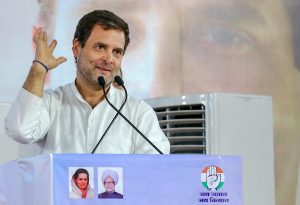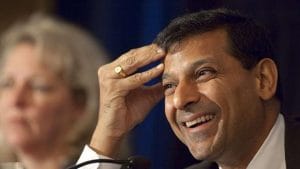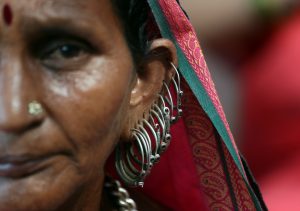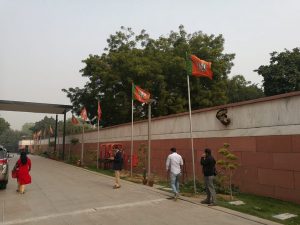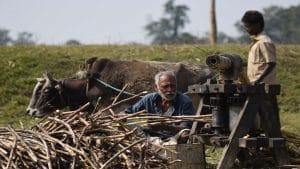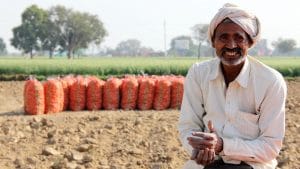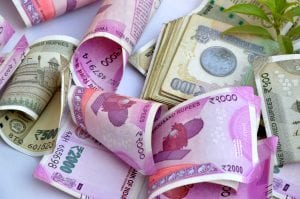Raghuram Rajan bats for second generation of reforms, says budget process getting murkier at the centre & state

KV Prasad Jun 13, 2022, 06:35 AM IST (Published)
 Listen to the Article (6 Minutes)
Listen to the Article (6 Minutes)
Summary
Often called the ‘James Bond’ of the world economy or ‘Rock Star’ central banker, former Reserve Bank of India (RBI) governor Raghuram Rajan was the youngest person to occupy the position of the Chief Economist at the International Monetary Fund (IMF). He was the 23rd governor of the RBI between September 2013 and September 2016 …
Continue reading “Raghuram Rajan bats for second generation of reforms, says budget process getting murkier at the centre & state”
Often called the ‘James Bond’ of the world economy or ‘Rock Star’ central banker, former Reserve Bank of India (RBI) governor Raghuram Rajan was the youngest person to occupy the position of the Chief Economist at the International Monetary Fund (IMF). He was the 23rd governor of the RBI between September 2013 and September 2016 and was instrumental in adopting the Consumer Price Index (CPI). Known for his frank views, Rajan said there is a need for second generation reforms as the country is coming to the end of benefits made by Dr Manmohan Singh and PV Narasimha Rao in early 1990s. The academic-turned-central banker said, “We are getting murkier and murkier on our budgetary process, both at the central and the state level.”
Edited excerpts:
Q: Do you think populist nationalism has a long shelf life? There are places in the book you say that it is probably not going to be with us for very long. What is your sense, will it last as long as liberal democracy did probably 60-70 years or do you think it is only a passing threat?
A: I don’t think it is a passing trend. I think what we have to worry about is that it creates forces that essentially are beyond those of its leaders and eventually can become very destructive as populist nationalism often looks for enemies both internal and external to survive.
So, my sense is that what we have to be very wary of is this trend of populist nationalism leading to something much worse.
For example, the conflict between countries and that could set back the world significantly at a time we need global solutions to many of the problems such as climate change as well as ageing populations in the west.
In that sense, the consequences of populist nationalism that we will come to rue, at some time, could be long-lasting. That is why I say we have to be very wary even if the fascination with populist nationalism lasts only for a while, the consequences could be quite detrimental.
Q: In India, we have seen the rise of Hindu nationalism as a prior period of elitist answers has only created or have created a lot of crony capitalism. Do you think the rise of Hindu nationalism is a very big threat in India or do you think that even this will be checked by the country’s pluralism?
A: India has many strengths and one of the strengths that I allude to in the book is its democracy. India’s democracy often comes up with the right answer. So, we have an election coming in the next few months and the message that the wider population wants to send will, in fact, be seen in that election. India is a varied country with a very diverse population. We may have the second largest Muslim population in the world and we are competing with Pakistan on that. We have many other religions represented and many ethnic groups to some extent. We need a real civic sense of nationalism that we are all Indians and we all are Indians as we have a common set of values. Anything that subverts that, I think, becomes problematic on whichever side. To that extent, I think we need to think about what kind of India we want going forward and that will stand us in good stead.
Q: You are speaking of encouraging local communities, giving more power to local communities, so that they feel empowered and they don’t get fascinated by something like vague nationalism and starts supporting populist nationalist causes. In India itself, as you point out, one of the bulwarks against extraordinary national power has been the state governments. You point out to state government’s judiciary as some of these institutions, do you think the non-Hindi states, the southern states who are at the moment a little angry at the distribution of taxes, can be one bulwark against this kind of steamrolling Hindu nationalism?
A:
I think there are checks and balances built into every country including in India. The fact that we have a large number of states – all of whom have different make-up is very important.
For example, we have a Communist government in Kerala and we have a variety of other governments elsewhere. So, these are important checks.
If you look at the history of every finance commission for a long while, they have insisted on continuing decentralisation, trying to empower the states more and within the states trying to empower the municipalities, the panchayats more. I think for a large country like India if people want to see democracy on the ground and effective democracy – where the officials respond to the needs of the people, I think this continuing process of decentralisation is very important.
There are still many places to go in India. For example, a number of large cities don’t have significant local powers to do what is necessary to clean up the city and to reduce crime etc. There is a division of power sometimes, which doesn’t empower the city. So, these are things we need to think about going forward. As we get these mega urban cities, how can we improve the quality of life there and some of it may be decentralising more power and taking the municipal elections more seriously.
Similarly, at the panchayat level, more funding to the panchayats so they can do some local level projects in a more effective way, but also that the local people have a greater sense of what the village panchayat is doing and can respond if it is going off-track.
So, I think while we have a flourishing democracy, it needs to be deepened and more decentralised, so that in fact, we get more action at the local level. At the same time and this is to your point about the fissiparous tendencies between the north and south, the state also has to step up in what it does, doing it more effectively so that people see a need to stay within the union and see that as a very strong element of what India is about.
Q: When you were speaking about populist nationalism and whether it is a passing trend, you said that it might harm institutions even if it stays only for a short time. I expected in your book that you will discuss the central bank as both in the United States and in India, there has been a tax on the central bank, do you worry about that institution in particular?
A: I would take it more broadly. I think that a whole variety of ‘elite institutions’ are under attack in a variety of countries and I think some of this is because we took for granted that there was broad popular support for the institutionalisation of various policies. Of course, when a large faction of the population feels left out, when they elect their champions back into power, those champions essentially take it upon themselves to attack the elite.
In the US, it is about attacking the elite in Washington or New York. What we don’t often capture as much is that some of these institutions have tremendous value in protecting a government from its worse instincts. To that extent, these institutions have come up over time and they have a purpose. What the populist movement is questioning is the importance of these institutions and what they do and also somewhat mistakenly saying that the will of the people should override these institutions.
The will of the people created these institutions in the first place to protect the state and the nation from the worse instincts of the will of the people, which sometimes exists itself. So to that extent, these institutions need to once again build clarity of why they are, what their purpose is and what they do is in the best interest of the nation. This means, they cannot hide in a corner, they have to keep coming out in explaining what they do and that is a dangerous process as you are competing with the politician on the same stage and politicians don’t like that.
Q: I can see personal anger over there. I want to pin you down to the central bank as we have seen people trying to grab the central bank’s capital and of course even a governor has resigned because of clashes with the government. So most specifically, do you think that an institution like the central bank in India can be in danger? We repeatedly hear statements like no institution is above the country.
A: I think that statement is right, but also wrong in intent. The statement is right that no institution is above the country. At the same time, that doesn’t necessarily mean that the elected representatives of the people at all times have absolute power and domain over every institution in the country. This is the whole idea of checks and balances that institutions act as checks and balances over the unbridled power of the representatives of the people. This is in a sense the essential nature of our country itself through various Supreme Court (SC) rulings and this has been established.
So, I think that some of the people making these statements don’t quite understand what a constitutional democracy is about and need to go back to the textbooks.
But in that sense, it still is the case that these institutions have to understand their place in the country and they are not. I have said repeatedly that they are not fifth columns or agents for the opposition. Their main task is to ensure national progress while ensuring national stability and protecting some of the rights of the broader people. So in that sense, I think institutions have to certainly work with the powers that be. But occasionally have to say no when they think what the powers that they want will be damaging to the country. I think as we go forward in India, we are developing stronger institutions. I think the general pace of change is positive, but it is not always in the same direction. So we do take two steps forward, but every once in a while, we take one step backwards and I think in this context, we have to continuously look at our institution and see how we can strengthen them for the purposes that we need.
Q: You are not still answering my question. I am going to pin you down, are you worried about the independence of the Reserve Bank of India (RBI)?
A: In the longer context, no. I don’t think so. I think that RBI has plenty of good qualities and whatever government is in power will recognise that and it needs a strong central government. So longer-term no. I think we have ups and downs.
Q: You have a whole chapter on the problems with the Indian state, markets and polity. You say over there that rather than India get into many things like owning banks and airlines, it should do cleaner things like clean property records and improve education, those are the things to stress on. But, we have seen various governments, we have seen the United Progressive Alliance (UPA), we have seen the National Democratic Alliance (NDA), nobody is willing to give up control on banks as you can see. Do you see any progress there at all in terms of lessening the control of the politician and the polity on banks?
A: Look, I think we are coming to a point where we need a second generation of reforms. The reforms that were carried out by Dr Manmohan Singh and PV Narasimha Rao in the early 1990s were big reforms and we are coming to the end of benefits from those reforms, not yet but soon. So it seems to me, we need another generation of reforms. These reforms should take into account our specific abilities. One of the problems we have is a government with limited capacity. This may sound astounding to many listeners. We have a government which has a lot of power and there are few checks on some of that power. For example, the power to give advertisements to the press. But, we also don’t have a government with great capabilities to do what it needs to do very effectively. So in that sense, if you count the number of government officials for example as a size of a population, we are not that large relative to other countries and certainly, in government spending, we are far below some of the industrial countries or even Brazil. So in that sense, I think it is time we took a close look at what government does and see how we can focus it on precisely what the country needs enlisting the power of the people to essentially take economic growth forward.
We are too dependent and the government tries to do too many things, we become too dependent on the government, which also creates the possibility for a more authoritarian government.
To change the structure of the economy, we need a whole new set of reforms. These would focus on creating a much more enabling structure. So that people, private business, workers can flourish in a whole new set of jobs as jobs being a very important requirement of the economy. However, it is not the government leading the way, but the government creating the possibility for people to do it and that is why focusing on things like how do we improve the process of land acquisition, so that we can unleash construction which would be a very big boon in the country both in jobs but also in the activity that would foster both in manufacturing as well as in services. So, we need to think about an enabling government rather than a government which tries to do a lot of things, many of them very poorly.
Q: If you got a shot of being finance minister or policymaker, what would your top three policies be?
A: I think there are short-term issues. A number of economists, of which I was one, have put together a set of policy ideas and they are out there for anybody to read, they are coming out in a book. But, let me say very quickly that certainly, I would focus on short-term actions that could put a lot of projects back on track which are still stuck, clean-up the banks as quickly as possible and set them back on credit growth, some of which is happening and try and find two or three key reforms which could unleash growth. Certainly, one of them has to be how we revive agriculture in a way that reduces distress. Second, would be an issue of land acquisition. We can learn from the best practices of the states and find methods that seem fair and in a sense also give states the freedom to pick the method that works best for them so that we learn from each other’s experiments. Land acquisition, bank cleanup as well as trying to find some key policies that would revive agriculture – these would be top priorities.
Q: Have you been approached by any of the parties to take up a policymaking position if they were to win?
A: I think it’s premature to have these discussions. I really think that this is an important election for India and I also think we need a new set of reforms. I would be happy to push those ideas and in fact, we are trying to do that more broadly to anybody who listens.
Q: Coming to the dangers that you say are besetting global trade. You have spoken about how we have to reimagine the IMF, give more powers to multipolar countries to Europe, to China in particular and even to countries like India. Do you think it is feasible at all in the near future, in the next 5-10 years?
A: One of the things I always complain about is that we look at the present and we feel so disheartened by the present. We think there is no way out and to some extent, the book is an attempt to imagine the future and say what are the things that we will need to do in order to get to a better place. You first need imagination. What is the future that you are thinking about that you think could work better then as people see that the political forces start getting together and do what is necessary? My old report on the financial sector in 2008 with a very eminent committee, we implemented much of that. But at the time we brought it out, most people said this is not going to fly, this is a bunch of pie in the sky ideas. What do you mean, you are going to free up branching for banks in India. We have never allowed that and we have seen branching freed up. So things can happen.
The broader point is that the economic world is created by the United States post World War II and is reaching the end of its shelf life.
There are a number of economies, which are large now that weren’t large then, China, of course, India soon and the European Union itself is an agglomeration that didn’t exist then and in this multipolar world, the idea that one would continue to determine a lot of what goes on, simply doesn’t hold. We need to bring everybody into the tent, but in a way that the rules meet the needs of all these players. At the same time, I also do argue in the book that we have gotten too far on globalisation as too many rules, too many constraints are now discussed and implemented at the global level, thus subverting the whole democratic process. However, it cannot be that a lot of things are agreed in a closed room either in Brazil or Geneva or Paris and then the countries leaders come back to implement them in the country without even asking should we actually do this. So, that is the sense in which I think it’s the time that not only we change the global structures in a way as to make it more democratic and more representative of the nature of the globe today. But at the same time, many more decisions should be first taken at the local or the national level and only then should we have an agreement at the global level, otherwise we have this frustration which demonstrates itself in the nationalism that you see in Europe but also in some ways in India.
Q: Many of the populists, nationalist leaders who are now there whether it’s the regime in the United States or India or Turkey or China. How much shelf life do you give them? Do you think they can stay for a term, do you think they can stay for a much longer?
A: I think it depends partly on how the system changes with them and party on their support. For example, there is a danger in both China and Turkey that the system will stay longer because some of the opposition has been curbed. On the other hand, the democratic process is still flourishing in India and the United States. So, we have to see how the dialogue changes as the democratic process express themselves.
Q: You have spoken about universal basic income and you have basically said that it is not something which even the United States can afford. But in India, we have embarked on competitive income transfers. The central government has earmarked something like Rs 72,000 crore in terms of income transfers in the FY20 budget and some state governments are also doing that. This is going to be a recurring expenditure year-after-year. Would you worry that India is also getting into fiscal profligacy, unaffordable fiscal profligacy?
A: I do think that we need a fiscal commission, which essentially maps out what the obligations are including contingent liabilities of the government and gives us a clean picture of what our fiscal position is. We are getting murkier and murkier on our budgetary process, both at the central and the state level. The problem is when that reaction comes suddenly, it can be quite devastating. So, we have to be very careful that the capital markets do not back up on us someday which is why more transparency on what exactly the liabilities are and what is going on is needed. It is a process. It doesn’t happen overnight, but we do need a much clearer picture and part of this clearer picture of what can we afford in terms of transfers. However, once you declare an entitlement whether it is health insurance, whether it is income support for certain categories of people or farmers – these as you said are recurring and may, in fact, grow over time if that category grows and it needs to grow especially because people aren’t satisfied with that old level of support. They constantly want some adjustments for inflation as well as for real changes. So, we are building up contingent liabilities at a fast pace. One of the points in the book was to say entitlements once set in place come back to haunt you to 10-20-30 years down the line and so it is imperative for India at this point to be very clear about what the cost of this entitlements is. It doesn’t flag to say this is going to cost us Rs 10,000 crore this year. What about five years from now when it is fully rolled out, how much is it going to cost and which government will be able to afford it or should put in place the revenue collection mechanism to in fact afford it? We need much more responsible budgeting that we have right now and it is something that is an institutional reform that is long overdue if we are to be a serious player in the world.
Targeted income for the very poor is something we can probably afford, but we need to think about how we target it effectively with minimal leakages and wind other systems of support into it. All these are very big changes as there is always resistance to moving other transfers into this targeted income transfer to the very poor. It has to be very poor as we cannot really make significant transfers to a large part of the population. So how do we do this? I think this requires careful study, it may require more information than we have and we should go about collecting it. It is not impossible, but the emphasis should be targeted at the very poor. We also have to think about the broader support to the agriculture that we give and make it much more effective. When we put all this together, we have to see how much we can afford and as a country that’s something that is very important at this point.
Q: One way to be able to afford it if the country grows, if the economy grows. What is your sense? Right now, some rating agency has marked down India’s FY20 growth rate to below 7 percent to 6.8 percent. What is your sense of the current India growth story over the next couple of years?
A: I am in the camp that has no idea what the statistics are at this point. We have moved them up-down and we have changed them. I think what we need is a revamp to figure out what is true growth rate is. I know one minister had said – how can we grow at seven percent and not have jobs. Well, one possibility is we are not growing at seven percent. But the kind of demand coming from out there that seems, at least at this point anecdotal, but we will know from the elections is that we need economic growth that reaches us that we need stronger broad-based growth which primarily for most people means good jobs and what we need to do is focus on that. How do we create good jobs for the vast number of people who are leaving schools, who are leaving agriculture, who are leaving universities in such a way that they can expand India’s growth? This is the time when we need to make sure that that, in fact, doesn’t happen.
Q: Are you worried about Indian statistical organisations and the data put out?
A: I am not worried. I just think we need now to essentially cleanup, find out what in fact is a source of confusion with the new GDP numbers, with the new revisions etc. I would say setting up an impartial body to look at it is an important step to restoring confidence and it may well be that that body pronounces such to rebuild confidence, but we absolutely need better confidence in our GDP numbers now given the back and forth that we had.
Q: The bigger problem is that one unemployment report has been kept under the wraps and that is why the fear that true data is not being revealed. I mean the worry that it is getting politicised the statistical infrastructure.
A: I meant something broader than just the GDP number.
For the whole statistical apparatus, we need some outside impartial news to give us a sense of are we doing the right thing and have the right procedures followed.
This is an area where India has tremendous strength, tremendous respect in the past and recent events, for whatever reason, have muddied the waters. I think we need to reestablish confidence because certainly navigating without good numbers is navigating in the dark.

Elon Musk forms several ‘X Holdings’ companies to fund potential Twitter buyout
3 Mins Read
Thursday’s filing dispelled some doubts, though Musk still has work to do. He and his advisers will spend the coming days vetting potential investors for the equity portion of his offer, according to people familiar with the matter

KV Prasad Journo follow politics, process in Parliament and US Congress. Former Congressional APSA-Fulbright Fellow










 Listen to the Article
Listen to the Article  Daily Newsletter
Daily Newsletter





